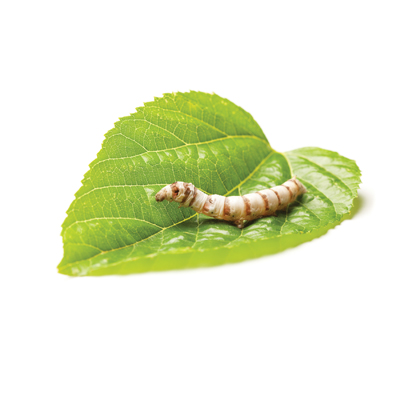Silkworms Care
Pisces Silkworms are a high source of calcium, protein, iron, magnesium, sodium & vitamins B1, B2 AND B3.
Pisces silkworms are the larval stage of Bombyx mori, the silkworm that feeds on the leaves of the mulberry tree. Keeping silkworms as pets is a fun, educational hobby for children and adults alike, as the fine silk can be collected and spun.Silkworms have a life-cycle of 55-60 days. Your silkworm will soon spin a silken cocoon. The cocoon will then hatch into a moth and lay eggs. The eggs will hatch into tiny silkworm larvae after 2-3 weeks, depending on environmental conditions. After moulting four times they will look like the larvae in this container.
Storage & Care
- Silkworms must only be fed on mulberry leaves. It is very important that they are not fed the newest leaves on the mulberry tree. To ensure a strong breeding cycle, keep the supply of fresh leaves regular and provide new food at least once a day.
As the larvae grow, they need to be fed more often, at least 3-4 times a day in the latter stages of their larval form.
The silkworms should be kept at an even temperature, preferably around 23C. It is best to house them in an open cardboard box, lined with paper to absorb any waste. The paper should be changed regularly to avoid waste product build up, which could allow disease to breed.
- Volume for volume, silkworms are more nutritious than either mealworms or crickets. They are a very soft bodied “worm” and add variety to the diets of many insectivores.
They are particularly suited to some large spiders, scorpions, carnivorous lizards and larger soft-billed birds. They can be included in the diets of captive insectivorous bats, marmosets, moles. If necessary, they can be dusted with calcium powder.
Silkworms are packed 10 worms per tub
